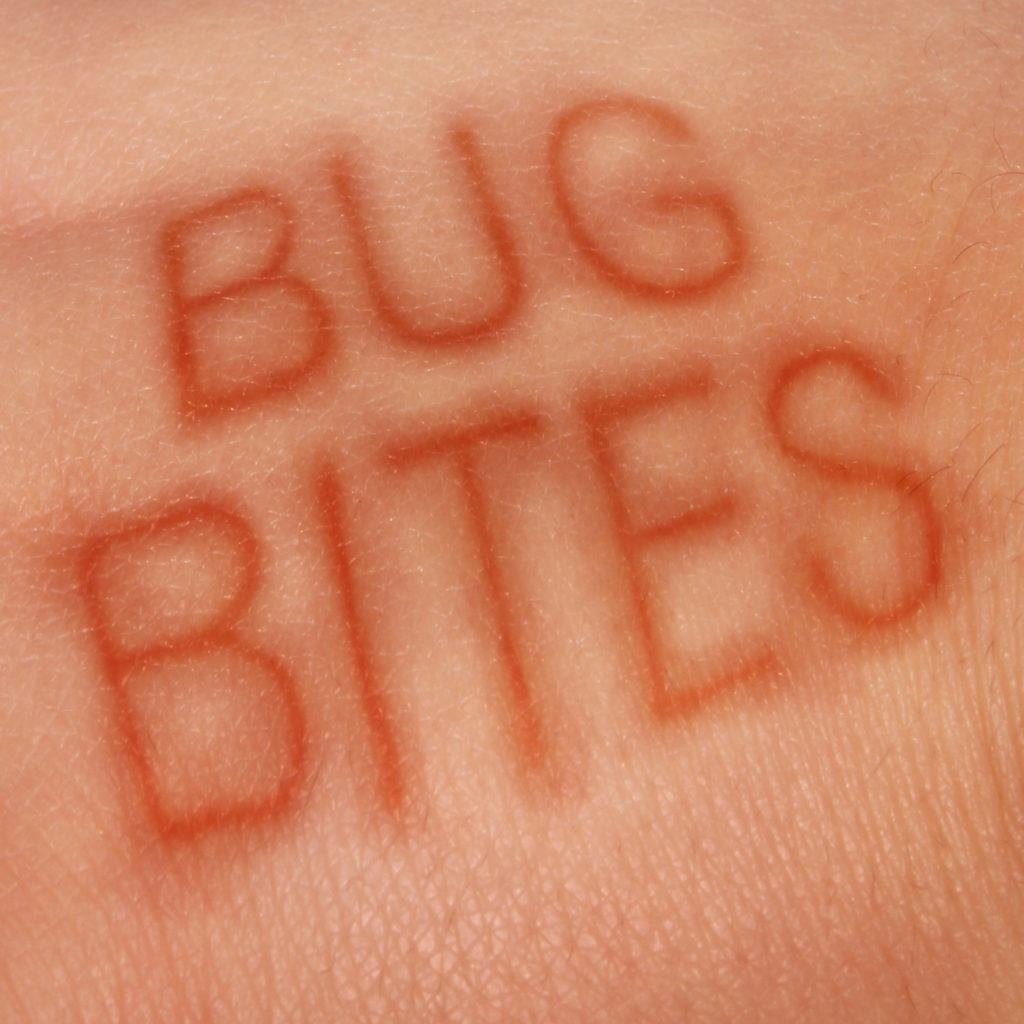
The Bite of Stinging Matters
This week we’re answering a couple of questions emailed to us by one of our readers Daryl (not his real name) in response to our Wellbeing in Summer articles. We thought the best way to address Daryl’s questions was to post an article about insect stings and bites.
Introduction
Routine encounters with insects and spiders can result in bites and stings. We do not know the extent of insect bites and stings globally as there are no requirements for reporting incidents. Occasionally bites or stings may lead to transmission of diseases such as malaria, development of Serum Sickness (a delayed allergic reaction) and other complications or infection at the site of the bite or sting. For most people, bites and stings are a nuisance and generally harmless. For a small number of people, a bite or sting may be potentially life threatening (3% of adults; 0.4 – 0.8% of children) or even fatal.
What happens?
During a sting or bite the skin is punctured, leading to a localized response. The chemicals involved in a sting are more likely to produce severe reactions and anaphylactic responses compared to bites. Reactions following a bite or sting may range from mild responses, such as localised irritation, mild stinging, intense burning, itching, pain and redness, as well as the formation of a bump at the site of the puncture. Some people experience severe and life threating reactions, which may require emergency care.
Are bites and stings the same?
Bites and stings are slightly different. Bites occur from the mouth parts of insects as they try to feed or defend themselves. Biting insects include mosquitos, ticks, spiders and some flies (eg horseflies). Insect bites cause puncture wounds to the skin.
Stings arise from defensive or offensive attacks via stingers (eg bees or wasps), injection of noxious chemical (eg fire ants) or by physical structures (eg barbs in honey bees). A sting involves an insect puncturing the skin and leaving material behind (saliva, faeces or venom, containing a mixture of chemicals) at the site of the wound. Not all stings contain venom.
What about life threating bites and stings?
Anaphylaxis refers to a person experiencing an allergic reaction following an allergy triggering event. Allergic (anaphylactic) reposes can occur immediately following a triggering event, such as an insect sting or bite, or at a later time (delayed reactions). In Australia, bee and wasp stings and Australian Jack Jumper ant bites are the most common triggers of anaphylaxis.
- difficulty talking
- swelling of the mouth, throat or tongue
- difficulty swallowing
- difficulty breathing, shortness of breath or wheezing
- rash/hives (may appear anywhere on the body)
- itching (usually around the eyes, ears, lips, throat or roof of mouth)
- flushing skin (feeling hot) which may turn red
- stomach cramps
- feeling sick in the stomach
- feeling weak, collapsing or falling unconscious
How can I avoid insect bites and stings?
Strategies for avoiding insect stings and bites (e.g. mosquitos, bees, wasps) include:
- Avoiding use of heavily scented products (perfumes, soaps, shampoos & deodorants) which can attract insects
- Wearing loose fitting, light coloured clothing with no floral patterns (insects are attracted to dark colors and patterns)
- Covering exposed skin by wearing long sleeves and trousers; wear shoes when outdoors
- Being mindful when consuming food and sugary drinks which may attract insects
- Avoiding outdoor activities at dawn and dusk when more mosquitos are around
- Remaining calm and moving away slowly if you encounter wasps, hornets or bees (don’t wave your arms or try to swat them)
- Taking care when around flowering plants, rubbish, compost, stagnant water and in outdoor areas where food is served
- Looking carefully before reaching around blind corners, into dark places and/or wear gloves when reaching into areas with reduced visibility
- Applying insect repellent to exposed skin [products containing diethyltoluamide (DEET) are thought to be the most effective]
Extra precautions may be required if you’re travelling overseas (eg malaria medication).
- Removing the sting or tick if it’s still in the skin (carefully or with tweezers)
- Washing the affected area with soap and water
- Applying a cold compress or an ice pack to swelling for at least 10 minutes
- Raising or elevating the affected area, where possible, to help reduce swelling
- Avoiding scratching the area, which helps reduce the risk of infection
- You’re worried about a bite or sting
- Your symptoms don’t start to improve within a few days or you’re getting worse
- You’ve been stung or bitten in your mouth or throat, or near your eyes
- A 10cm or more area around the wound becomes red and swollen
- You have symptoms of an infection such as pus, increasing pain, swelling or redness at the site of the bite or sting and/or fever, swollen glands and other flu-like symptoms
Can I use insect repellents and sunscreen together?
It is generally thought that insect repellents can be used with sunscreen, without any reduction in repellent activity. Use of separate products (not combination products) is recommended and sunscreen should be applied first, then followed by repellent.
Final words?
For most of us insect stings and bites are usually self-limiting (resolve without treatment) and any symptoms generally disappear within a few days to a week or so.
Further Reading/Resources
The Victorian Poisons Information Centre(VPIC)
VPIC provides advice about what to do if a person has been bitten/stung by a snake, spider, bee, wasp etc. VPIC can provide members of the public with telephone assessments and advice on first aid, with or without referral to a doctor or hospital. The service is located at the Austin Hospital and is integrated with the Austin Hospital Clinical Toxicology Service.
http://www.austin.org.au/poisons
Insect Bites & Stings
Excellent article which describes how to manage a variety of insect bites and stings (bee, wasp, ticks, scorpion, centipede, etc)
https://www.healthdirect.gov.au/insect-bites-and-stings
